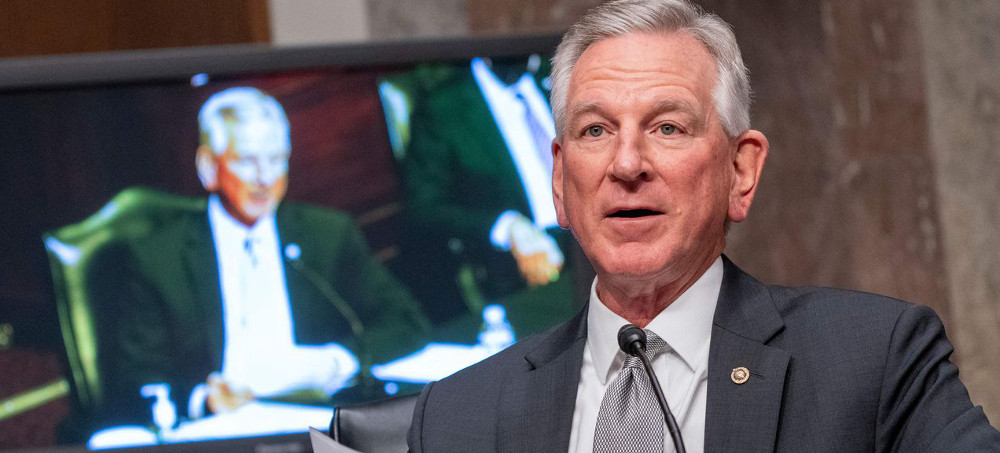Live on the homepage now!
Reader Supported News
Ex-Pope Benedict and Mitch McConnell offered public words about public sins. None of it means a thing.
Benedict, 94, was responding to a Jan. 20 report from a German law firm that had been commissioned by the German Catholic Church to look into how cases of sexual abuse were handled in the Munich archdiocese between 1945 and 2019. Benedict, the former Cardinal Joseph Ratzinger, headed the archdiocese from 1977 to 1982. The report faulted Benedict’s handling of four cases during his time as archbishop, accusing him of misconduct for having failed to restrict the ministry of the four priests even after they had been convicted criminally. The report also faulted his predecessors and successors, estimating there had been at least 497 abuse victims over the decades and at least 235 suspected perpetrators.
497 victims, and history tells us that it's unlikely many of them were one-time encounters. Benedict’s reply?
“I have had great responsibilities in the Catholic Church,” Benedict said. “All the greater is my pain for the abuses and the errors that occurred in those different places during the time of my mandate…And I have come to understand that we ourselves are drawn into this grievous fault whenever we neglect it or fail to confront it with the necessary decisiveness and responsibility, as too often happened and continues to happen,” he wrote. “As in those meetings, once again I can only express to all the victims of sexual abuse my profound shame, my deep sorrow and my heartfelt request for forgiveness.”
This was a guy who didn’t hesitate to ruin the careers of clergy and scholars for the sin of thinking for themselves. I’ve heard more sincere expressions of remorse from kids on their way to juvie. He wants to be forgiven. I think he should take his chances.
Then there's Washington D.C., where folks are all agog that Mitch McConnell called January 6 by its rightful name. From NBC News:
“We all were here. We saw what happened. It was a violent insurrection for the purpose of trying to prevent the peaceful transfer of power after a legitimately certified election, from one administration to the next. That’s what it was,” McConnell, R-Ky., told reporters at his weekly news conference.
His remarks followed an outcry from Democrats and some Republicans after the RNC approved a resolution Friday accusing Rep. Liz Cheney, R-Wyo., and Rep. Adam Kinzinger, R-Ill., of “participating in a Democrat-led persecution of ordinary citizens engaged in legitimate political discourse,” a reference to the Jan. 6 committee. Cheney and Kinzinger are the only GOP members of the House panel.
Big fcking deal, as the current president once put it.
Did McConnell free up his caucus to vote for Impeachment II, which would have guaranteed that El Caudillo del Mar-a-Lago could never run again? Has he done anything to rein in his own crazies? Calling a tiger a tiger doesn’t mean much coming from the guys who opened the cage. To hell with all apologies from public men for their public sins. None of them mean a thing.
 A new book claims Trump's toilet at the White House was often blocked by shredded papers that aides believe were flushed by the president himself. (photo: Getty)
A new book claims Trump's toilet at the White House was often blocked by shredded papers that aides believe were flushed by the president himself. (photo: Getty)
A new book claims Trump’s toilet at the White House was often blocked by shredded papers that aides believe were flushed by the president himself.
In a book excerpt first reported by Axios on Thursday morning, Haberman claims that White House staff would often find Trump’s toilet clogged up with shredded documents—and they reportedly believed the papers were destroyed and flushed by the president himself. Haberman reports that workmen had to fix the toilet on more than one occasion.
The reporter appeared on CNN’s New Day to discuss the revelation later on Thursday morning. “Maggie, we start with the toilet,” host Brianna Keilar said to open the interview, in a sentence that has perhaps never before, and will likely never again, be heard on a national broadcast news.
“As I was reporting out this book, I learned that staff in the White House residence would periodically find the toilet clogged,” said Haberman. “The engineer would have to come and fix it, and what the engineer would find would be wads of, you know, clumped up printed wet paper.”
The reporter went on to clarify: “[This was] not toilet paper. This was either notes or some other piece of paper that they believe he had thrown down the toilet. What it could be, Brianna, it could be anybody’s guess. It could be Post-Its, it could be notes he wrote to himself, it could be other things, we don’t know. But it certainly does add... another dimension to what we know about how he handled material in the White House.”
CNN’s John Berman clearly wanted to know more. He went on to ask Haberman if she knows whether the clogging happened more than once, and if we know for sure if it was Trump’s toilet that had been blocked.
“They would periodically find this to be the case,” Haberman explained. “The exact number, John, I’m not certain of, but it was not just once... It was in the pipes... it was in the pipes. This was his bathroom.”
Trump, as he so often does, dismissed the claims as “fake” news.
In a statement on Thursday morning, the twice-impeached-former-president said: “Also, another fake story, that I flushed papers and documents down a White House toilet, is categorically untrue and simply made up by a reporter in order to get publicity for a mostly fictitious book.”
Trump’s mishandling of official documents has come under closer scrutiny since 15 boxes of papers were taken away from Mar-a-Lago last month. The boxes were previously reported to have contained Kim Jong Un’s “love letters” to Trump, as well as the handover note left for the incoming president when Barack Obama left the White House in 2017.
However, reports this week have suggested that the documents swiped from the White House by Trump’s team were perhaps even more sensitive than previously realized. Late Wednesday, The New York Times reported that National Archives officials found what they believed to be “classified information” when searching through the seized boxes.
Earlier Wednesday, The Washington Post reported that the National Archives had gone so far as to ask the Justice Department to investigate Trump’s handling of the documents taken from Mar-a-Lago.
Haberman’s book, Confidence Man: The Making of Donald Trump and the Breaking of America, is set for release this October.
 Police secure evidence at the shooting scene on Larpenteur Avenue in Falcon Heights, where Philando Castile was shot by a St. Anthony police officer. (photo: Christopher John/MPR)
Police secure evidence at the shooting scene on Larpenteur Avenue in Falcon Heights, where Philando Castile was shot by a St. Anthony police officer. (photo: Christopher John/MPR)
The new count is up from 1,021 shootings the previous year and 999 in 2019. The total comes amid a nationwide spike in violent crime — although nowhere near historic highs — and as people increasingly are venturing into public spaces now that coronavirus vaccines are widely available.
Despite setting a record, experts said the 2021 total was within expected bounds. Police have fatally shot roughly 1,000 people in each of the past seven years, ranging from 958 in 2016 to last year’s high. Mathematicians say this stability may be explained by Poisson’s random variable, a principle of probability theory that holds that the number of independent, uncommon events in a large population will remain fairly stagnant absent major societal changes.
That the number of fatal police shootings last year is within 60 of the average suggests officers’ behavior has not shifted significantly since The Post began collecting data, said Andrew Wheeler, a private-sector criminologist and data scientist.
“I think the data is pretty consistent that there’ve been no major changes in policing, at least in terms of these officer-involved shooting deaths,” he said.
Advocacy for policing overhauls has intensified since the murder of George Floyd by a Minneapolis police officer in 2020. More than 400 bills were introduced in state legislatures last year to address officers’ use of force. Police departments increasingly partnered with mental health experts to respond to people in crisis. Cities established civilian review boards for use-of-force incidents.
None of it decreased the number of people shot and killed by officers last year. The total has increased slightly most years since 2015 — a pattern that Wheeler said may or may not signal that fatal shootings truly are trending higher.
Franklin Zimring, a law professor and criminologist at the University of California at Berkeley, said he agreed that the rise in fatal shootings from 2020 to 2021 was relatively insignificant. He noted that the percentage change from one year to the next — 3 percent — was small.
While last year’s policing overhauls did not decrease fatal shootings, Zimring said the stagnancy was unsurprising. A policy enacted now, he said, may take years to make a statistically significant difference.
“The good news is, things aren’t getting an awful lot worse,” Zimring said of the 2021 total. “And the very bad news is that they’re not getting better, either.”'
The demographics of the people fatally shot have remained largely constant since The Post started tracking after a police officer in Ferguson, Mo., killed Michael Brown in 2014, gathering information from news coverage, social media posts and police records. Although the FBI launched its own data collection program to track police use of force in 2019, a lack of participation by departments has put that program’s existence at risk.
Last year, all but 15 percent of people shot and killed by officers were armed, according to The Post’s data. Ninety-four percent were men. Roughly 14 percent had known mental health struggles, down from about one-fifth in the two previous years and about one-fourth in 2016 and 2015.
Sixteen percent of people fatally shot last year were killed after police responded to a domestic-disturbance call. Eleven percent were fatally shot after someone called 911. (Data on racial demographics was too incomplete to provide meaningful analysis. Such data can require additional months of research to finalize.)
Among the highest-profile of the killings after a 911 call was that of Ma’Khia Bryant, a teenager in Ohio’s foster system. After two people called police to ask for help, body-camera footage shows, a Columbus police officer arrived and saw Bryant swing at another person’s head with what appeared to be a knife. The officer yelled, “Get down!” several times and then fired four shots at Bryant.
The publicly released video prompted local and national outcry, driving hundreds into the streets to protest another deadly interaction between law enforcement and a Black American.
About 20 percent of last year’s fatal police shootings were captured on body cameras — the highest portion since The Post began tracking. In 2015, the first year data was collected, body-camera video existed for roughly 8 percent of shootings.
The increase, however, does not seem to have affected the number of fatal encounters. That lack of change may be because officers get used to wearing the cameras and do not act differently because of them, said Nusret Sahin, a criminal justice professor at Stockton University with an expertise in body cameras.
Body-camera video of a fatal shooting also may not be widely viewed. Some states and police departments make the footage public, while others do not, Sahin said. He said it is also unclear how many police supervisors watch the videos and impart discipline for policy violations.
“If you know that this will just be inside your service and will not be released unless there’s a high-profile incident or a use-of-force complaint, you wouldn’t change your behavior,” Sahin said.
Last year also stands out because one of those shot and killed by police was a young child — 8-year-old Fanta Bility. Bility was shot by Sharon Hill, Pa., police officers who fired at a car outside a high school football game in August. The officers mistakenly thought someone in the vehicle was firing at them, a grand jury said. Four people were hit by the gunfire, and Bility died of her injuries.
The three officers involved were criminally charged with manslaughter and reckless endangerment in January. They were later fired from the police force. The shooting marked the third time in the last seven years that police fatally shot a child under age 10. The other children, both 6, were killed in 2015 and 2017.
Of the 1,055 people fatally shot last year, about 1 percent were juveniles — consistent with other years that The Post has tracked.
The killing of Adam Toledo, 13, roiled Chicago last spring after a city police officer chased Toledo through an alley on March 29 and ordered him to stop and show his hands. Video appears to show Toledo stopping at the opening in a fence, turning and raising his hands as an officer shoots once and strikes him in the chest.
Toledo appears to have been holding something in his hand when he stopped running. Police have said it was a gun that they later recovered. An attorney for Toledo’s family said he had dropped the gun and put up his hands before the officer fired.
The relative stability of the annual number of fatal shootings does not mean the total is unchangeable. Wheeler said societal interventions, such as new policies around use of force, could shift the total from its expected range.
“The data’s consistent with that [range] now,” he said, “but that doesn’t mean that you can’t do stuff to reduce those incidents over time.”
 Republican senator from Alabama Tommy Tuberville. (photo: Shaw Thew/Getty)
Republican senator from Alabama Tommy Tuberville. (photo: Shaw Thew/Getty)
"They might as well start sending robots up here," the Alabama Republican told The Independent's Eric Michael Garcia. "You can't do anything."
"I think it would really cut back on the amount of people that would want to come up here and serve, I really do," Tuberville added. "We don't need that."
Tuberville's comments come as several of his colleagues, both Republicans and Democrats, have introduced a slew of proposals to ban lawmakers from trading stocks, representing a bipartisan push to uproot potential conflicts of interest and violations of stock trading rules in Congress.
Insider's "Conflicted Congress" investigation identified 55 lawmakers who failed to properly report their financial trades last year as mandated by the Stop Trading on Congressional Knowledge Act, also known as the STOCK Act. The rule is designed to combat insider trading by requiring timely disclosure of stock transactions.
Tuberville was one of the worst violators of the STOCK Act in 2021, disclosing 132 stock trades weeks or months late with transactions totaling at least $894,000.
A spokesperson for Tuberville did not immediately return Insider's request for comment.
Some recent proposals put forth by members of Congress also aim to apply a stock-trading ban on lawmakers' spouses, children, and their congressional staffers. Other bills don't go as far as an outright ban, and instead propose a requirement for incoming members of Congress to put their stocks in a blind trust.
Unlike Tuberville, many Republicans have expressed support for a stock-trading ban. Sens. Josh Hawley of Missouri and Ben Sasse of Nebraska have each introduced bills to ban lawmakers from stock trading.
Senate Minority Leader Mitch McConnell on Tuesday signaled that he'd be open to considering a ban, telling reporters, "We'll take a look at that kind of legislation and see what may be appropriate."
House Speaker Nancy Pelosi, after previously dismissing the idea, is now working with House Democratic leaders to ban lawmakers from stock trading.
 U.S. consumer prices have increased solidly in the past few months on items such as food, rent, cars and other goods as inflation has risen to a level not seen in 30 years. (photo: Mario Tama/Getty)
U.S. consumer prices have increased solidly in the past few months on items such as food, rent, cars and other goods as inflation has risen to a level not seen in 30 years. (photo: Mario Tama/Getty)
Virtually every category of consumer prices — from food and women's clothing to rent and airfares — went up.
Virtually every category of consumer prices — from food and women’s clothing to rent and airfares — went up.
The Labor Department’s report that consumer prices rose a higher-than-expected 0.6 percent for the second month in a row increased speculation in financial markets that the Federal Reserve might act more aggressively in its campaign of interest rate increases, which are expected to begin next month.
But the central bank may be reluctant to move too fast for fear of spooking investors. In any case, Fed policymakers will get another consumer price index reading before they decide how to approach that next rate-setting meeting in mid-March.
“Today’s report was not encouraging, but it’s premature to conclude that the Fed will move [up rates by half a percentage point] next month,” said Roberto Perli, head of global policy research at Cornerstone Macro. “Even if the next report were to show strong price pressures, I think the Fed will be wary to make an aggressive first step in order not to risk destabilizing markets.”
“That said, if inflation continues to remain very high, the Fed will have little choice than to move fast,” he said.
Let’s look at what we learned from Thursday’s CPI report.
That headline number looks bad
At 7.5 percent, annual inflation is the highest we’ve seen since 1982, and this is the second report in a row where the number has broken 7 percent. But it’s also telling us what we largely knew — over the last 12 months prices have gone up a lot.
The worse number for both the Fed and the White House is that inflation rose 0.6 percent from December to January, because that gives us a better sense of what’s happening now rather than what was going on a year ago. That’s the same pace it grew the month before, meaning that these price spikes don’t seem to be slowing down consistently (there had been a noticeable drop in the previous couple of months, raising hopes that the trend would continue).
Transitory no more
Starting in April 2021 and into the summer, when inflation started its ascent, the price spike was driven by just a few categories like cars, which had gotten more scarce because of a semiconductor shortage. The central bank expected this heightened inflation to only be temporary — “transitory” was Fed Chair Jerome Powell’s preferred word then — because it was being driven by production and shipping delays that were expected to subside as the pandemic faded.
But the supply problems haven’t been resolved, and prices are starting to rise across industries. Used cars are still a big chunk of the increase over the past year, having risen 40.5 percent in that time. But “the increase is broad-based, with virtually all component indexes showing increases over the past 12 months,” the Labor Department said.
Inflation is problematic across the board
Grocery costs rose slightly faster than prices for people eating out in January (1 percent vs. 0.7 percent), but food overall continues to get markedly more expensive. Women’s outerwear prices surged 6.5 percent last month, while dishes and flatware rose 4 percent.
Airline prices also increased 3.4 percent, but on the bright side for travelers: hotel and motel prices saw a 4.2 percent drop. Another silver lining in January: New car prices stopped rising, while used car prices slowed their ascent.
Meanwhile, rents also grew a strong and steady 0.5 percent — a trend that is expected to keep pushing up inflation readings.
 Taysha Martineau of Fond du Lac stands in front of a police line while in ceremony on land that fell in the Line 3 pipeline's path, on 23 July 2021. Half an hour after this image was taken, they were arrested. (photo: Chris Trinh)
Taysha Martineau of Fond du Lac stands in front of a police line while in ceremony on land that fell in the Line 3 pipeline's path, on 23 July 2021. Half an hour after this image was taken, they were arrested. (photo: Chris Trinh)
Transcript
This is a rush transcript. Copy may not be in its final form.
AMY GOODMAN: This is Democracy Now! I’m Amy Goodman, with Juan González.
In a historic victory for international labor rights, thousands of Mexican workers at the General Motors plant in Mexico have voted in a landslide to form an independent union. The union election at the GM plant in the city of Silao in Guanajuato was the first since the implementation of new labor reforms in Mexico written into the U.S.-Mexico-Canada Agreement.
Many powerful unions in Mexico, with ties to elite politicians and businesspeople, had for years gone behind workers’ backs to make deals with multinational corporations to keep workers’ pay low and deny them other benefits. This is María Alejandra Morales Reynoso, the secretary general of the independent union of workers in the automotive industry. Ahead of the vote, she and the union were targeted with threats.
MARÍA ALEJANDRA MORALES REYNOSO: [translated] Let’s hope those other unions change and work for the actual workers, so they, unions, don’t only look our for their own interests. A union has to represent the workers. And I believe we are going to start by making that much-needed change. We still don’t know who sent threatening messages. They were not only sent to myself, but to all my committee present here.
AMY GOODMAN: GM’s own reports show wages for new workers at GM’s plant in Silao, who build the Chevrolet Silverado and GMC Sierra pickups, make about $25 for a 12-hour shift. One of the GM workers, Armando Sandoval, recently spoke to Reuters about how the new union could mean higher wages for workers at the GM plant.
ARMANDO SANDOVAL: [translated] With the union we’ve had for years, they raised our wage by 14 pesos. Alongside those 14 pesos, they raised transportation, union fees and cafeteria prices. Practically, we are breaking even, year in and year out. We are hoping for many improvements.
AMY GOODMAN: By choosing the new independent union, GM workers in Silao have broken ties with one of Mexico’s most influential labor organizations, which had held the plant’s contract for 25 years. Major U.S. labor unions supported the election. AFL-CIO President Liz Shuler said, quote, “This vote represents a rejection of the past and a new era for Mexican workers’ right to associate freely.”
General Motors says it’s ready to enter negotiations with the new independent union. Under the country’s reformed labor law, the union has six months to negotiate a contract approved by a majority of the workers.
For more, we go to Guanajuato in Mexico to speak with Javier Bravo, professor of history at the University of Guanajuato.
Welcome to Democracy Now!, Professor. It’s great to have you with us. Talk about the significance of this victory of the independent union in a GM plant in Mexico.
JAVIER BRAVO: Thank you, Amy. Hello, everyone.
Well, this victory of SINTTIA’s is like a — has a very big symbolic meaning for us in Guanajuato and in Mexico, because 76% of the workers have voted for SINTTIA to represent them before the CEO and the owners of the plant. That’s a huge victory that is like a lighthouse for us, for our labor movement, because for many years here in Guanajuato and in Mexico, the CTM has been controlling the labor movement. It has demobilized the labor movement in Mexico. So this victory is very important, especially because SINTTIA, the new union, is like a true workers’ union, representing workers, because CTM was — is led by professional corrupt politicians, not workers. So, for the first time in the existence of the plant here in Guanajuato, workers will be representing workers. That’s beautiful news.
There are some aesthetics in what is happening right now in Guanajuato, especially because the secretary general of the SINTTIA union is a woman. That’s another symbolic message to the people and the working class here in Guanajuato. Me, myself, as a faculty member of the Universidad de — of Guanajuato, and my colleagues from Mexico Solidarity Project are trying to support SINTTIA in all the ways that are possible to us, because they have no means. I mean, the labor quotes, the union quotes were in the hands of CTM. So, SINTTIA was born from — almost from nothing, just from the will of these rebel workers. We thank all these rebel workers for creating such an inspiring union, Amy.
JUAN GONZÁLEZ: And, Professor Bravo, I’d like to ask you —
JAVIER BRAVO: Yes.
JUAN GONZÁLEZ: In terms of the labor reform, most Americans are not aware that these kinds of elections would not even be happening had it not been for the labor reforms that President López Obrador passed shortly after becoming president, that insisted that more than 700,000 union contracts — workers have to be able to vote on their contracts secretly, to vote for their elected officials. What’s been the impact of that labor reform that was passed in April of 2019?
JAVIER BRAVO: Well, I think the results are just in process. We are not seeing the whole picture. But now the conditions and the possibility — the possibilities of free unions are very important. So, for the first time in our labor history in Mexico, they can create new unions independently of the will of the owners, for the first time. Can you imagine? So, that means that they can now really, in real life, struggle, fight for being treated as human beings, not just as objects as a means for the owners’ profit, but as human beings, not just human resources like natural resources. No, they’re human beings. And they have now the possibility, the legal possibility, to being treated as human beings.
There’s a lot of possibilities, not just only to create new unions free of their owners’ influence, but also they can elect their representatives without asking for permission to the patrón — from the owner. That is a new reality for our labor movement. But also, in universities, it could be applied, because in universities, in public universities in Mexico, most of the unions are protection unions, protections for the — protection for the central administration. So, this possibility of using the new labor legislation in Mexico is very — gave us hope, the hope we did not used to have.
AMY GOODMAN: Javier Bravo, we want to thank you so much for being with us, as we have to wrap the show, professor of history —
JAVIER BRAVO: OK.
AMY GOODMAN: — at the University of Guanajuato in Mexico.
And that does it for our broadcast. Democracy Now! is currently accepting applications for a human resources manager. You can learn more and apply at democracynow.org. I’m Amy Goodman, with Juan González. Stay safe.
 Natural gas is flared off at a plant outside of Cuero, Texas, in 2015. (photo: Spencer Platt/Getty)
Natural gas is flared off at a plant outside of Cuero, Texas, in 2015. (photo: Spencer Platt/Getty)
The oil and gas industry didn’t invent the name. But it invented the myth of a clean fuel.
A big part of the early appeal was how much cleaner gas seemed than coal. In the 19th century, people could see and smell the particulate matter, sulfur, and nitrogen leaving a trail of smoggy air in cities. By comparison, natural gas is almost entirely made up of methane, a colorless, odorless gas that produces far fewer of these pollutants when burned.
What no one knew back then was that methane is pollution, too — just a different kind. A large body of scientific research now shows that gas, when it’s produced and when it’s consumed, poses a danger to human health and to the climate.
In the 19th century, this ignorance was understandable, but today most people still don’t appreciate how insidious gas fuel is. When the climate communications group Climate Nexus conducted a poll of 4,600 registered US voters last fall, 77 percent had a favorable view of natural gas, far higher than when asked about their views on methane. Less than a third were able to link that natural gas is primarily methane. In the same poll, a majority incorrectly answered that they think methane pollution is declining or staying about the same. Other surveys show similar results.
The reason for the disconnect is embedded in the very name, “natural gas.” The word “natural” tends to bias Americans to view whatever it is affixed to as healthy, clean, and environmentally friendly. Natural foods, natural immunity, and natural births are among the many buzzwords of the moment.
“The idea that we ought to do what’s natural, we ought to use what’s natural, and we ought to consume what’s natural is one of the most powerful and commonplace shortcuts we have,” said Alan Levinovitz, a religion professor who wrote Natural: How Faith in Nature’s Goodness Leads to Harmful Facts, Unjust Laws, and Flawed Science. “The term influences people’s attitudes toward natural gas. People are going to be more likely to see natural gas as better than it is; they’re more likely to see it as safer.”
The language has broader ripple effects on consumer choices and political decisions. Countries around the world have paradoxically encoded policies that incentivize continued gas production and consumption, even as 100 of them joined a voluntary Global Methane Pledge to slash methane by 30 percent in the next decade. The stakes have only grown as gas production rises to replace coal as the dominant fuel powering the electricity sector and millions of homes. Even as cities like New York and San Francisco are working to phase out gas appliances in their construction, gas production and exports have boomed to make the US the biggest exporter of liquified gas in the world.
Some climate advocates have already dropped the “natural” moniker in their legal filings, advertising, and communications, when talking about methane. They favor calling it “fossil gas” or “methane gas” — anything that’s more descriptive for a dangerous and explosive substance.
“I want my language to communicate the harms that are inherent in methane, in this climate-forcing substance. I want to be clear this is a threat to climate and public health,” said Matt Vespa, an attorney for the environmental legal nonprofit Earthjustice.
But the oil and gas industry isn’t ready to lose its biggest marketing advantage. If anything, industry language like clean, renewable, and responsible, has proliferated the past few years. The industry is actively at work to protect its careful branding as it tries to dodge climate scrutiny from regulators.
For over a century, the gas industry sold the public a myth about clean energy
Researchers at Yale’s Program on Climate Change Communication had a hunch about gas that they had a chance to test in a peer-reviewed paper published last fall. They knew from previous public opinion polls that Americans are more likely to view natural gas far more favorably than other fossil fuels and see it as a solution for climate change, rather than a driver. Anthony Leiserowitz, one of the researchers and co-author of the paper, wanted to isolate the effect the word “natural” had on these views.
They found a big effect, in line with the large body of social science research showing how food products labeled “natural” lead people to consider them more eco-friendly and healthy. The paper, published in the Journal of Environmental Psychology, examined how 3,000 respondents viewed different synonyms for gas. More than half of participants had a positive view of natural gas, but the advantage shrank immediately when you called it “natural methane gas” or “methane gas,” as well as for “fossil gas” and “fracked gas.” A second survey asked 500 participants to word-associate with “natural gas.” Only a tiny portion of the respondents, fewer than 6 percent, associated natural gas with methane, showing, according to the researchers, “that the relationship between the two is not a typical top-of-mind association.”
The study unsurprisingly found that the word “natural” biases Americans in favor of gas. But it also showed a key ignorance that has been exploited by the gas industry: The public doesn’t understand that the gas is essentially the same as methane, a pollutant. Millions of Americans cook with gas every day, but they don’t necessarily realize it is a fossil fuel that’s being piped into their stoves.
Though the industry may not have invented the phrase natural gas, it has leaned into its advantages in decades of advertising. In 1930, one Pennsylvanian gas company promoted its fuel as clean, healthful heat. And the advertising wasn’t always limited to just gas: One pamphlet from the 1940s, dug up by Levinovitz in the research for his book, likened coal to a cake baked by sunlight and heat.
In a few instances, companies have simply opted to drop the word “gas” entirely, going even further to distance themselves from the fact that its core product is methane. In 1997, the gas utility company, Northwest Natural Gas, simply dropped gas from its name to become Northwest Natural.
The gas industry advocacy group Natural Allies for a Clean Energy Future also omits gas from its name. It has blanketed Politico newsletters in the last year with ads promoting gas as a solution for climate change, linking to a website that depicts two young children playing with a skateboard. You have to read the fine print to understand what’s being advertised is switching from one fossil fuel (coal) to another. (The group has connections with the Democratic Party, and recently added two former Democratic senators, Louisiana’s Mary Landrieu and North Dakota’s Heidi Heitkamp, to its leadership council. Heitkamp told The Hill she would be working “changing hearts and minds of people in the climate movement.”)
Environmentalists, meanwhile, have been complaining about how the gas industry misled consumers for decades. In 1994, the environmental group Greenpeace filed a complaint to the Federal Trade Commission, the independent body that has the power to fine and stop false advertising. Greenpeace urged the FTC to take action against the American Gas Association’s advertisements that had appeared in outlets like Newsweek, the New Republic, and Time. The complaint charged that the trade group’s claims the fuel was the solution for environmental problems and acid rain went too far to be reasonably supported by the science.
The FTC would have had the power to rein in this type of advertising as early as the 1990s. It didn’t use that power. The gas industry, free from FTC restrictions, has now embraced even more flagrant greenwashing 30 years later, with major consequences for climate change.
As gas’s reputation has soured, industry has gotten more creative
The concentration of methane in the atmosphere is rising alarmingly fast, with human activities mostly to blame. It has taken scientists some time to track down exactly where all that methane was coming from, but in the last few years, more research has shown methane leaks to be a systemic problem in the oil and gas industry. Wherever you find gas, you can potentially find some methane leaking out — at drilling sites, from pipelines, in cities, and even inside the home.
As the gas industry’s reputation has soured, world leaders are starting to take a harder look at these methane leaks and cities are moving toward phasing out gas in new building construction. Rather than slowing down, the natural gas marketing campaigns have become even more aggressive.
Democratic politicians and some environmental groups a decade ago embraced the thinking that gas could be a “bridge fuel” to phase out the more polluting coal industry. They didn’t just favor policies that promoted gas over coal, but at times prioritized gas over wind and solar. The lobby group American Petroleum Institute has pivoted from saying gas is a bridge fuel to arguing it is the fuel of the future. One API leader argued in 2019, “I would urge that it’s not a bridge but a foundation and will be a foundation for years to come.”
Today, Democratic leaders including President Joe Biden have largely backed away from that language, as methane is more than 80 times more capable of warming the atmosphere over a 20-year period than carbon dioxide. A politician can’t claim to be serious about fighting climate change if he ignores that methane concentrations have hit record highs.
As Democrats have gotten to be more skeptical of “bridge fuel” rhetoric, it’s become common for gas producers and suppliers to claim that their gas is cleaner than the gas produced somewhere else. That’s where newer phrases have come from, like “responsibly sourced gas” and “renewable natural gas.” Other times, the gas industry rallies under the banner of the American flag, calling its product “freedom gas.”
Whatever the label, the industry has adopted shifting language to promote gas as a climate solution, rather than a climate problem.
In the last year, API, ExxonMobil, and a number of other oil companies ran a blitz of Facebook ads that emphasized “clean natural gas,” first reported by the Guardian. SoCalGas, a utility that supplies gas to 22 million California customers, has run online ads claiming it is “renewable.” One company that sells biogas trapped from landfills and sewage treatments, which is identical to methane, claims it is a renewable energy company producing “zero-emissions” from the “cleanest fuel in the world.”
The oil and gas industry is adamant that gas is essential to transitioning off of other fossil fuels. “Natural gas is the leading reason the U.S. has reduced CO2 emissions to generational lows, and exporting that progress abroad by enabling coal-reliant nations to turn to cleaner fuels is critical to reducing emissions globally,” said API spokesperson Megan Bloomgren in a statement emailed to Vox.
The same type of rhetoric has shaped policy decisions that have much bigger stakes for climate investments. For example, in January, the commission overseeing the European Union became embroiled in a controversy when it said natural gas and nuclear power were sustainable investments, angering climate advocates, as first reported by Politico. The document declared that recognizing gas and nuclear energy can clean up climate pollution in the EU. This categorization would allow investors to count funding for future gas projects as sustainable and clean.
Climate campaigners are dealt a losing hand in these kinds of policy debates as long as gas is viewed as natural. It’s why they’re looking to challenge the way natural gas is used in company advertising.
In a bid to accelerate a transition away from gas, environmental groups have submitted a new complaint to the Federal Trade Commission to regulate misleading natural gas claims in advertising. Matt Vespa, an attorney for Earthjustice, hopes to see the FTC finally tackle the fossil fuel industry’s advertising claims. One important turning point could be how the FTC treats the issue in its upcoming Green Guide, updated every few years, on how food and cosmetic companies can use “natural” in their advertising.
While no single move can erase natural gas from our popular discourse overnight, Vespa hopes that a strong FTC stance against natural gas “will percolate into regulators’ minds that this is harmful.”
This language is “too dangerous to have around”
Climate advocates point to the polling, the greenwashing, and the policy implications as pressing reasons it’s important that everyone, especially the media, drop the natural gas label.
For Alan Levinovitz, the name natural gas is simply “too dangerous to have around.” Stopping calling it natural gas is the necessary first step for the world to move away from gas as a climate solution.
“My general rule of thumb for effective climate communication is don’t echo Big Oil sloganeering,” said Harvard scientist Geoffrey Supran, who researches oil disinformation. “So, at this point, it seems quite obvious that if they like using this term, the rest of us should avoid it.”
Following Supran’s logic, activists, political leaders, and some academics have shifted away from calling it natural gas.
But the name has had a 200-year head start. “It’s hard to penetrate the decades of ‘natural gas’ [messaging] just being ingrained in people’s brains,” said Vespa.
As for what should replace our default language, Anthony Leiserowitz’s 2021 Yale study had another finding that’s important to consider: Calling gas “fossil” or “fracked” could backfire if the objective is to reach as broad an audience as possible. The Yale polling found Republican voters viewed gas more favorably when it was called fossil gas or fracked gas, but more neutrally when it was called methane gas.
Despite these findings, some climate activists, politicians, and scientists have settled on calling it fossil gas anyway. Katharine Wilkinson stopped using natural gas in favor of simply gas or methane a few years ago, dropping all references to “natural” in the 2020 republished online version of the climate solutions book Drawdown and the podcast she co-hosts, A Matter of Degrees. House Natural Resources Committee Chair Raúl Grijalva (D-AZ) prefers “fossil gas,” and the phrase can be found in several committee reports and legislation. And a handful of scientific papers over the years have used fossil gas.
If the movement to rename natural gas were to catch on, it would have bigger ripple effects on consumer choices and even political decisions. “It could shape your everyday behavior in terms of whether you decide to buy a natural gas stove or an induction stove,” Leiserowitz said. “These are marketing slogans and campaigns that have changed the way Americans think about what they do.”
Follow us on facebook and twitter!
PO Box 2043 / Citrus Heights, CA 95611


